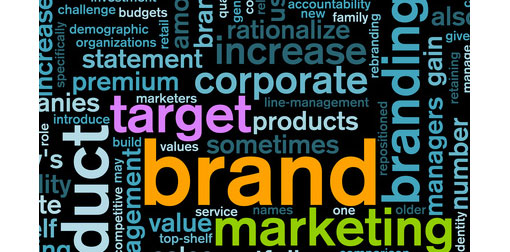
Marketing presentations form the lifeblood of many companies. So how do we ensure that we get these presentations right?
We asked the presentation community for their top tips.
22 Marketing Presentation Tips
1. Include a survey
Maintaining the attention of the audience is obviously critical to any presentation. A great way of re-energising an audience mid-way is to put them into your presentation. This can be tricky as you don’t want to draw attention to people who would prefer to stay anonymous. A great way to do this is to run a survey prior to the presentation – a couple of days works best. You can create a simple survey using a free on-line application such as www.surveymonkey.com which can be emailed to the audience prior to the event.

David Sadler-Smith
You can ask a few questions which are relevant to the presentation but are also a little playful. When you present the results your audience will sit up again with a level of nervous anticipation and, providing you have been sufficiently provocative or amusing, be left in a more attentive state.
This technique, when executed well, will make a lasting impression on your audience. I’ve used it several times – in large and small groups – and I typically continue to get comments long after the presentation. Poor execution, however, will also be remembered. So always test your ideas.
David Sadler-Smith, Marketing Manager at Honeywell – Trend Controls

Ellen Finkelstein
2. Spread the reach of the presentation
Post it on slidesharing sites such as slideshare.net, authorStream.com, MyBrainShark, and others. Convert it to video and put it on YouTube. Use the Embed code and put it in your blog.
Ellen Finkelstein, Author, Expert on PowerPoint, presentation skills
3. # stands for Numbers
We can easily imagine a specific amount or a comparison to well-known objects from our life. For instance: “This new ship is so huge you can fit four football playing fields on it”. Get an inspiration from documentary programmes on National Geographic or Discovery TV channels. They are excellent in making such comparisons and explaining numbers.
4. $ stands for Money
How much does it cost? Our attention wakes up when someone talks about money. We will remember your point much longer if you associate a specific price to it. Especially if you can compare the price to the cost of everyday things. For example: “Our product costs the same as a smoker spends on cigarettes for a month.”
5. !? stands for Stories

Martin Simka
We are best at remembering if something is put in the context of actions. Something should be happening, something starts, grows or fails. So present your message as a story. Don’t list the features of your product. Tell a little story instead: “An imaginary user of your product is Mr. Abraham Smith. Every morning he turns on his computer, launches your software and does this and that using A feature of the application. Then he does a search using B feature, etc. Then he goes for a quick lunch and when returns he promptly writes a report thanks to X and Y tools of your product.”
6. Avoid abstraction
Be specific. Our brains are good at understanding and remembering concrete examples. Digesting an abstract idea requires much more time and energy.
Martin Šimka, Passionate about Presentations | Cryptography Specialist at PWPW S.A.
7. Don’t assume you need slides

Adam St John Lawrence
Don’t assume you will need slideware (Powerpoint, Keynote, whatever). Many of the best presentations don’t use it.
(Alternatives include props, tales, skits, real people, or simply your own impassioned voice, face and body.)
For more: http://workplayexperience.blogspot.com/2009/07/actors-guide-to-presentation-technique.html
Adam St.John Lawrence , Comedian, Service Designer and Customer Experience Consultant
8. Be memorable

Alessandro Bottega
A few years ago we pitched on the design and production of an annual report and other investor communication deliverables. During that period I was cycling seriously and had participated in a fund-raising cycle tour sponsored by the company we were pitching to.
Our presentation was essentially physical design boards, so to create something more memorable, I concluded the pitch by making the statement that ‘we wanted to partner you so much, I would take my clothes off’, and proceeded to strip before the panel including the CEO. From the minute the jacket and tie were strewn across the room, the eyes were as wide as saucers, until on dropping my trousers, their corporate cycling kit was revealed. We won the business, and still have it, but after a few years of not cycling, my girth would not permit the same stunt now…
It was a calculated strategy as we knew that the CEO was known for his offbeat humour and the story was repeated at many a function, building our brand personality.
Alessandro Bottega, Divisional Managing Director at Ince (Pty) Ltd

Alessandra Cimatti
9. Prepare for technical issues
Work on content and delivery, but don’t forget to take into account technical issues that might come up during the presentation (if using slides).
Alessandra Cimatti, Marketing and PowerPoint presentation consultant
10. Prepare for success
Use SUCCES…

Jon Barrett
Simple… reduce to the core
Unexpected… surprise them
Concrete… make it real
Credible… make it believable
Emotion… help them feel it
Stories… help them remember you
…as presented by Chip & Dan Heath in Made to Stick – Succinctly summarised here….
http://www.slideshare.net/jonbarrett/made-to-stick-why-some-ideas-take-hold-and-others-dont-2613610
Jon Barrett, Associate at Foreman Roberts
11. Have a clear message

Jessica Pyne
The most important thing in any presentation is to ensure that you get the message right. Having a clear message for your audience is essential to achieving success, but presenters delivering marketing presentations often mix sales and marketing messages.
Remember your audience, identify your objectives, and know what you’re working towards. A marketing presentation aims to establish or generate interest, not close the deal. Keep your content relevant to your audience, and you will experience far greater success than if you just bombarded them with facts about your product or service.
Jessica Pyne, Marketing Communications Assistant at m62 visualcommunications
12. Prepare for the worst
Problems happen, all sorts of problems:
- Technical failure (projector, Internet access, etc.)
- Sickness of a team member
- Customer asking for a shorter presentation
- Interruptions
You don’t want to look ridiculous and unprepared or fumble some excuses because you can’t do your presentation.

Denis François Gravel
So, prepare for the problems that “could” happen (should I say “would” happen?) by planning numerous solutions.
Ex.1: If you are using a projector, can you do the presentation without it or should you have a second projector with you?
Ex.2: Have a back-up for the team members. Someone who will be able to take the place of the one stuck in the traffic or lost in the city.
With adequate preparation, you won’t get caught off guard.
Denis François Gravel
[I always take a printed set of slides, so if the projector fails I can present using the printed slides as visuals – Editor]
13. Connect with the audience
Connecting with your audience of 2 (or 2,000) is the key to a powerful presentation.
Take a moment before you start and make eye contact; let your audience see that you want their attention and that they will benefit by giving it to you.
- KNOW the room (control lights, sound, visuals, temperature)
- KNOW your audience
- KNOW your material

Jayne Amelia Larson
Get in the room the day before (or morning of) and run the full presentation with all technical aspects. Not only does this help cement the material for you (and allow for last-minute changes), but it automatically and exponentially increases your comfort level.
14. Get the audience involved in your marketing presentation
Make your presentation as interactive as possible – by including your audience mentally and physically, you compel them to be INVOLVED which naturally leads to more focused attention and better understanding.
15. Try using Prezi
I also highly recommend Prezi presentation software; it’s engaging, stimulating, and highly effective.
Jayne Amelia Larson, Producer at JADAL LLC
16. Work on your core message
Presentations are driven by message, not content, and your passion for something to be different. We often get sucked in by our important content and forget to be very clear about ” What’s your point?”. Jon Steel (Perfect Pitch) says that the message is the soul of the presentation, without a soul a presentation is just a collection of facts.
Joseph Popovitch, Senior CardioVascular Product Specialist at Philips Healthcare
17. Take some time to develop your presentation

Marshall Makstein
Plan time to develop your marketing presentation. A good presentation takes time to develop whether it is with PowerPoint slides or without. I would guess some of the most awful PowerPoint decks are due to people leaving preparation for their presentation to the last minute (a very common problem). Well designed, effective slide content is usually a good sign the speaker is well prepared to present and that they thought the audience was worth the time and effort.
Marshall Makstein, Meeting Communications Professional
18. Make it S.U.C.K.

Michael Jones
S – Be Succinct
U – Be Unique
C – Seek Clarity for your message
K – Make it a Keeper, create a memorable image in the minds of your listeners
Michael Jones, Perfect Presentation Coaching

Clare Leyland
19. Keep it short and sweet
A marketing presentation needs to be short and sweet! A two-minute overview to get the message across and leave the audience wanting to know that little bit more, that’s when we send the team in.
Clare Leyland, Sales Executive Eyeful Presentations
20. Remember what you want people to do

Gary Newton-Browne
Be 100% crystal clear about what it is you want people to do after they’ve seen this marketing presentation. Be 100% crystal clear on when you want them to do it and be 100% crystal clear on why they need to do it.
Remember, you are stealing people’s time!
21. Use the Rule of 3
Keep it simple by using the rule of 3 (people remember 3 things easily) and use emotional words that move people.
Gary Newton-Browne, Head Honcho, ProPresent Ltd
22. Plan for short attention spans
When presenting, especially via webinars, plan to design for short attention spans. The visual focus of the audience shifts from you (with slides as support) to just your slides. Engage visually and with more frequent interactivity to turn passive, potentially multitasking participants into active participants who are more likely to remember your key messages.
Roger Courville, Author, The Virtual Presenter’s Handbook
Published On: 14th Jun 2010
Read more about -Presentation Articles , Hints and Tips, Investor Presentation
Recommended Pages
-
Adorei este modelo! Posso baixar? Obrigada.

